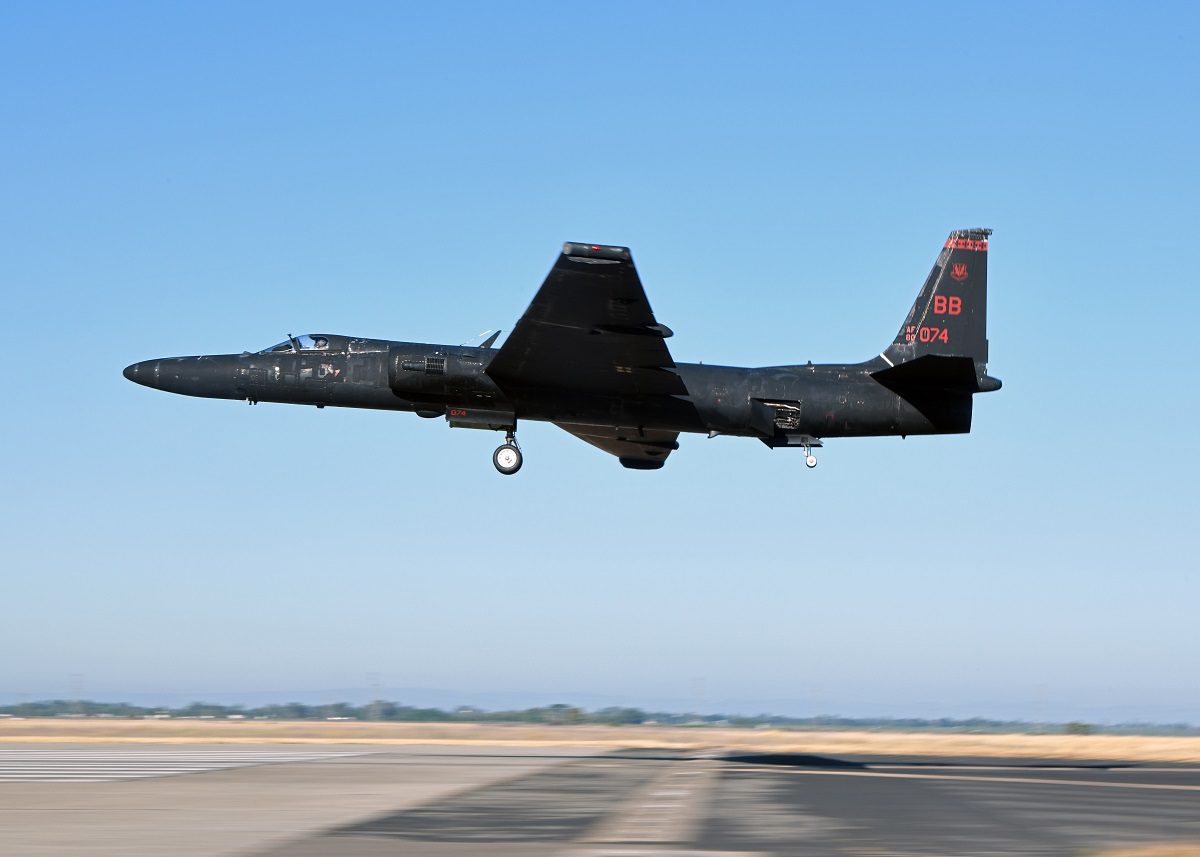
A U-2 Dragon Lady piloted by retired U.S. Air Force Lt. Col. Jonathan Huggins, 1st Reconnaissance Squadron U-2 instructor pilot, prepares for landing July 31 last year at Beale AFB, Calif. The bicycle-type landing gear and low-altitude handling characteristics of the U-2 require precise control inputs during landing, according to the Air Force. (Photo: U.S. Air Force)
The Air Force has awarded a BAE Systems/Sierra Nevada Corporation (SNC) team a contract for Global High-altitude Open-system Sensor Technology (GHOST), which is to replace the Northrop Grumman Airborne Signals Intelligence Payload (ASIP) on the Lockheed Martin U-2S Dragon Lady reconnaissance aircraft, BAE Systems said on Oct. 19.
“Under the contract, awarded earlier this year, the team will provide a sensor prototype that gives insight into adversaries’ actions by collecting and analyzing electronic signals,” BAE Systems said. “It will exploit the radio frequency (RF) spectrum, critical to battlefield superiority, to detect, identify, locate, and track RF emissions.”
The company said that it has “more than 20 years of experience developing software-defined open architecture SIGINT systems, and our customers have logged more than 100,000 operational hours on our systems.” BAE Systems is to perform its part of the contract work at the company’s plant in Hudson, N.H., while SNC employees will work on the contract in Folsom, Calif., San Antonio, Texas, and Dayton, Ohio.
Earlier this month, the Air Force said it had also awarded Northrop Grumman a contract for GHOST.
The Air Force did not disclose the amounts for the Northrop Grumman and the BAE Systems/SNC contracts for GHOST, but the Air Force awarded more than $41 million for GHOST last March, per the service’s fiscal 2022 budget request. The Air Force’s fiscal 2022 budget requested about $21 million for GHOST integration and testing.
An Air Force official said in August that the service may use open architecture system upgrades for the U-2, including GHOST and the Raytheon Technologies‘ Advanced Synthetic Aperture Radar System-2B (ASARS-2B) radar, on other platforms.
ASARS-2B is to double the range of the Raytheon ASARS-2A radar, carried in the nose of some U-2s.
The Air Force said in August that it had awarded three contractors funding to build Phase I initial prototypes for GHOST–a middle tier acquisition program.
While the Air Force fiscal 2022 budget said that the service plans to divest its U-2s by 2026, the Air Force has embarked on efforts to ensure continued relevance for the service’s fleet of 31 U-2s through the 2030s.
Editorial Note: This article was first published by Defense Daily, a sister publication to Avionics, it has been edited. To view the original version, click here.